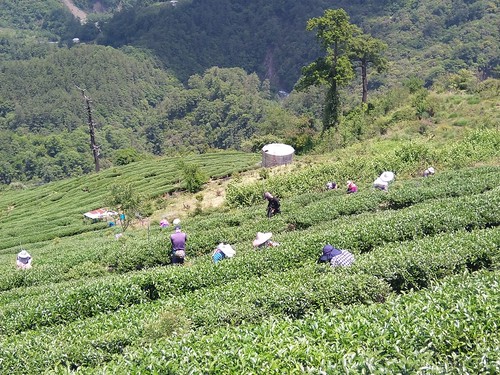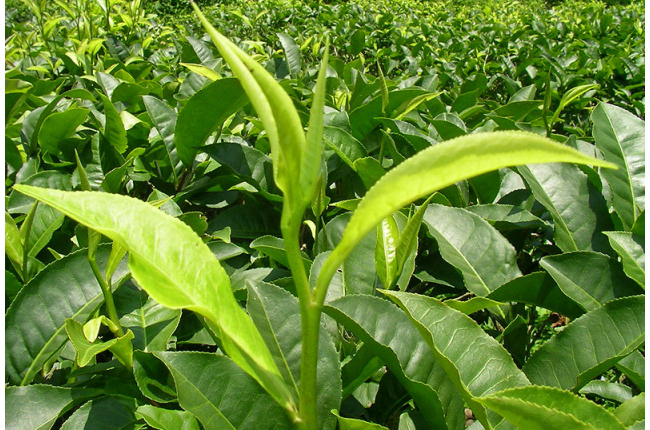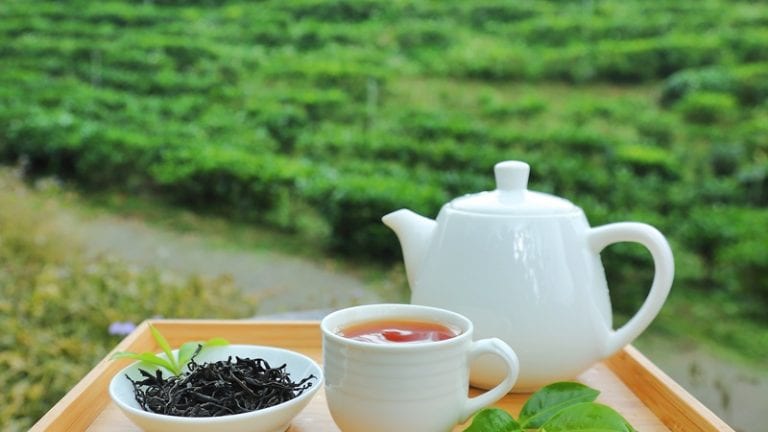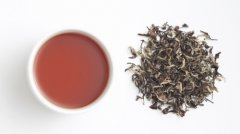How to remove the three elements of tea brewing skills
Catechin is a kind of polyphenols, which is the main substance that constitutes the taste of tea, and the redox reaction of polyphenols in tea is an important key to the quality of tea. The bitter taste of tea mainly comes from the feeling caused by the combination of catechin and protein in the mouth. Catechins can also be divided into two categories: "simple catechins" (free) and "complex catechins" (cool type). Simple catechins have weak taste convergence, less bitter and refreshing, while complex catechins have strong taste convergence and bitter taste. The following will be from the variety, natural environment, picking standards, manufacturing technology these four key, decrypt the reasons for the bitterness of tea!
The content of polyphenols caused by bitter taste varies with different varieties.
The ratio of palisade tissue to spongy tissue in tea leaves of large leaf species is about 1:2, and that of leaflet species is about 1:1. Palisade tissue mainly contains aroma substances such as chlorophyll and lipids, while sponge tissue contains a lot of polyphenols. The sponge tissue of the leaves of tea trees with large leaves is more developed, and the content of polyphenols causing bitter taste is higher than that of tea trees with small leaves. Therefore, according to the different congenital conditions of tea, large-leaf tea trees are generally more suitable for producing black tea with high fermentation degree. A large number of polyphenols can enhance the oxidative polymerization of polyphenols through enzymatic oxidation (fermentation) and reduce bitterness. Because of its rich aroma substances and chlorophyll, lobular tea is suitable for producing unfermented green tea or semi-fermented oolong tea.

The natural environment of the producing area will affect the metabolism and synthesis of polyphenols.
The content of polyphenols in tea bud leaves varies with the four seasons of the year, which is the lowest in spring and the highest in summer. This regular phenomenon mainly changes due to natural environmental factors such as air temperature, rainfall, sunshine intensity, humidity, tea garden orientation and so on. In the environment of high temperature and long sunshine in summer, it is beneficial to the metabolism and synthesis of polyphenols, and the content of polyphenols is higher, so the more tea cyanines picked in summer or low altitude need to be produced by heavy fermentation, the less bitter the tea will be. Tea garden orientation, humidity, shading and other factors also affect the temperature and sunshine intensity of tea trees, and affect the content of polyphenols in many ways. In high altitude or high latitude areas, due to the low temperature or cloudy environment, the sunshine intensity is weak, and the respiration of tea plants slows down, so the synthesis rate of polyphenols is slower, so the content is less.
The bitterness of tea is different according to different picking standards.

Green tea is picked with tender buds as the standard, and the more advanced green tea is picked, the finer it is, such as the famous Biluochun, which only picks grain-sized corn buds. The content of catechins in the tender buds of tea is high, and the unfermented green tea retains a lot of catechins in the tender leaves, especially the complex catechins which taste bitter and astringent, so the key to brewing green tea is to put less leaves and brew with lower water temperature.
Manufacturing process is the key to transform bitterness into mellow.
The insoluble macromolecular carbohydrates in fresh leaves are decomposed into soluble small molecular carbohydrates, insoluble protein molecules into soluble amino acids, and special varieties of aroma, which can be brought into full play through the unique manufacturing process of semi-fermented tea. The sweetness of amino acids and carbohydrates can ease the bitterness in the tea and bring a more mellow taste to the tea.
Bai Miao Oolong (Oriental Beauty Tea) in semi-fermented tea is made from tender raw materials of tea cyanine, but its special heavy wilting and re-fermentation process greatly reduces the bitterness of tea. Although the fully fermented black tea also uses tender buds as raw materials, after withering, kneading, fermentation and drying, a large number of catechins are oxidized and polymerized into theaflavins and lycopene, which reduces the bitter taste and forms the characteristics of rich, fresh and sweet black tea. Such as Hong tea with grass flavor, indicating that the fermentation is incomplete, there will still be a strong bitter taste, is the appearance of poor production.
The bitterness of tea comes from the polyphenols in the substances contained in tea cyanine, which varies in different producing areas, varieties and seasons, but it can be changed into alcohol by a good production process. The bitterness of poorly made tea is a typical manifestation.

/ / simple learning of tea knowledge / /
1. The larger leaf species and the smaller leaf species contain more polyphenols, which is easier to cause bitterness.
two。 In the four seasons, the content of polyphenols in summer tea is the most, while that in spring tea is the least, the less bitter.
3. Green tea is picked with tender buds as the standard, and the content of complex catechins which taste bitter and astringent is high.
4. The unique manufacturing process of semi-fermented tea turns the bitterness in the tea soup into mellow.
Important Notice :
前街咖啡 FrontStreet Coffee has moved to new addredd:
FrontStreet Coffee Address: 315,Donghua East Road,GuangZhou
Tel:020 38364473
- Prev

What kind of tea in Taiwan is delicious? what's the difference in taste and flavor among honey-scented black tea, oriental beauty and red oolong?
Oriental Beauty is heavy in fermentation, and the tea is amber, so it is often mistaken for a kind of black tea. However, black tea is fully fermented, such as honey-fragrant black tea is made from oolong varieties. Among them, Taitung Red Oolong, which has sprung up in recent years, is more fermented than Oriental Beauty in terms of fermentation. coupled with the production technology of re-baking fire, it shows a multi-layered charm in terms of aroma and taste.
- Next

Which milk tea shop to join is reliable how to join? It is a trick for entrepreneurs to join fake milk tea shops
Another entrepreneur joined a well-known milk tea shop, and his hard-earned money was cheated. There is a topic on Weibo today: entrepreneurs are tricked by joining fake milk tea shops. On Aug. 28, "look at the News KNEWS" released a video that attracted everyone's attention. The video mainly tells the story of # entrepreneurs being defrauded into joining well-known milk tea shops, which involves a 700 million yuan case. According to the relevant video, the incident took place at 2.
Related
- The milk tea cup becomes smaller?! Overlord Tea Girl launches a new "Return to Yunnan" series
- Accused of selling counterfeit and high-priced coffee beans! Well-known boutique coffee brand "Oukelao" bowed and apologized!
- How to make espresso dumplings? Can I eat coffee and glutinous rice balls together?
- Save the unformed and stagnant powder cakes in one second! What is the problem with stagnant water in the powder bowl of the espresso machine?
- What does hand-brewed coffee stop mean? Why is it not recommended to make coffee by hand?
- Is it normal to smell like coffee? Why does coffee smell like alcohol? What's wrong with the strong smell of cold extract ice dripping ice brewed coffee?
- How to solve the problem that hand-brewed coffee extraction takes too long? Why is the water flowing so slowly when making coffee?
- The main points of making Australian white coffee, the proportion details, how does Australian white properly foam and blend the flowers?
- Can ice water make cold extract coffee? What is the difference between room temperature water and ice water for making cold coffee?
- What milk is best for making latte and white Dirty coffee? What is the difference between different brands of fresh milk and pure milk for making coffee?

